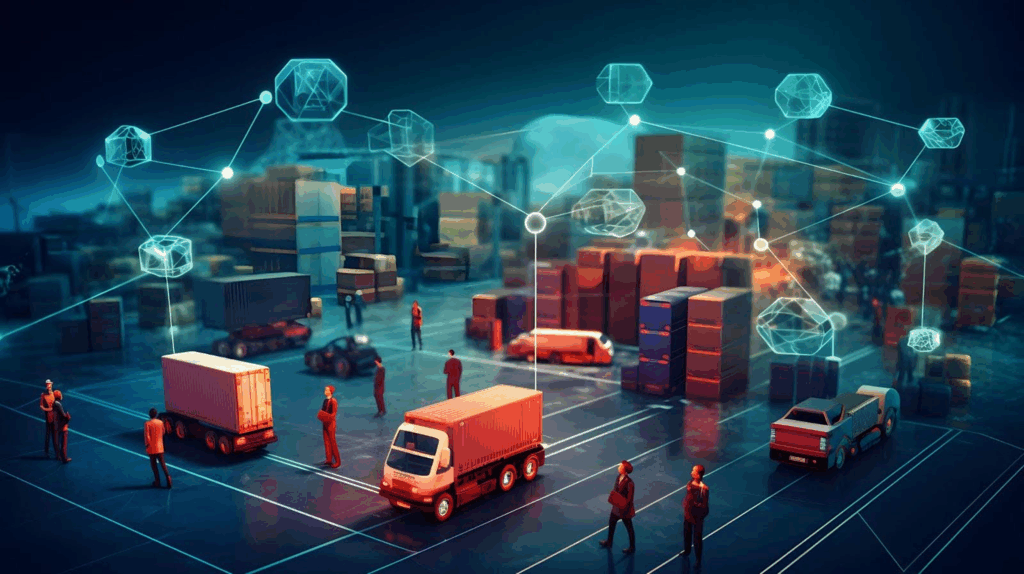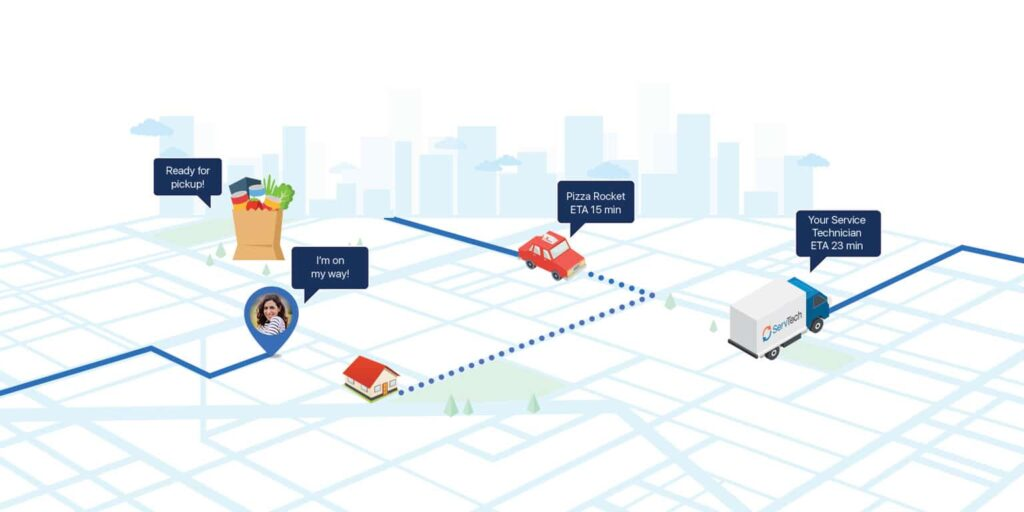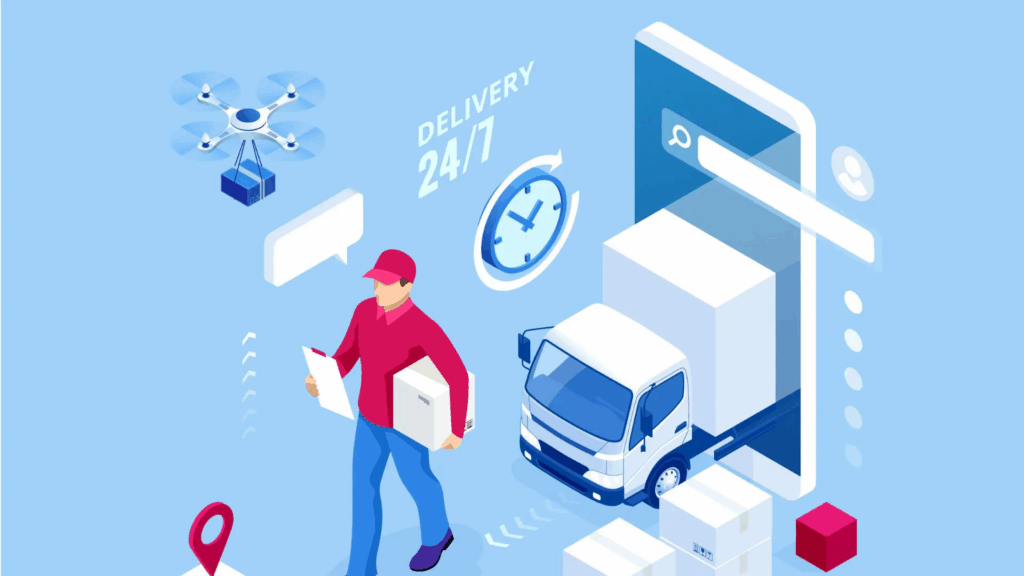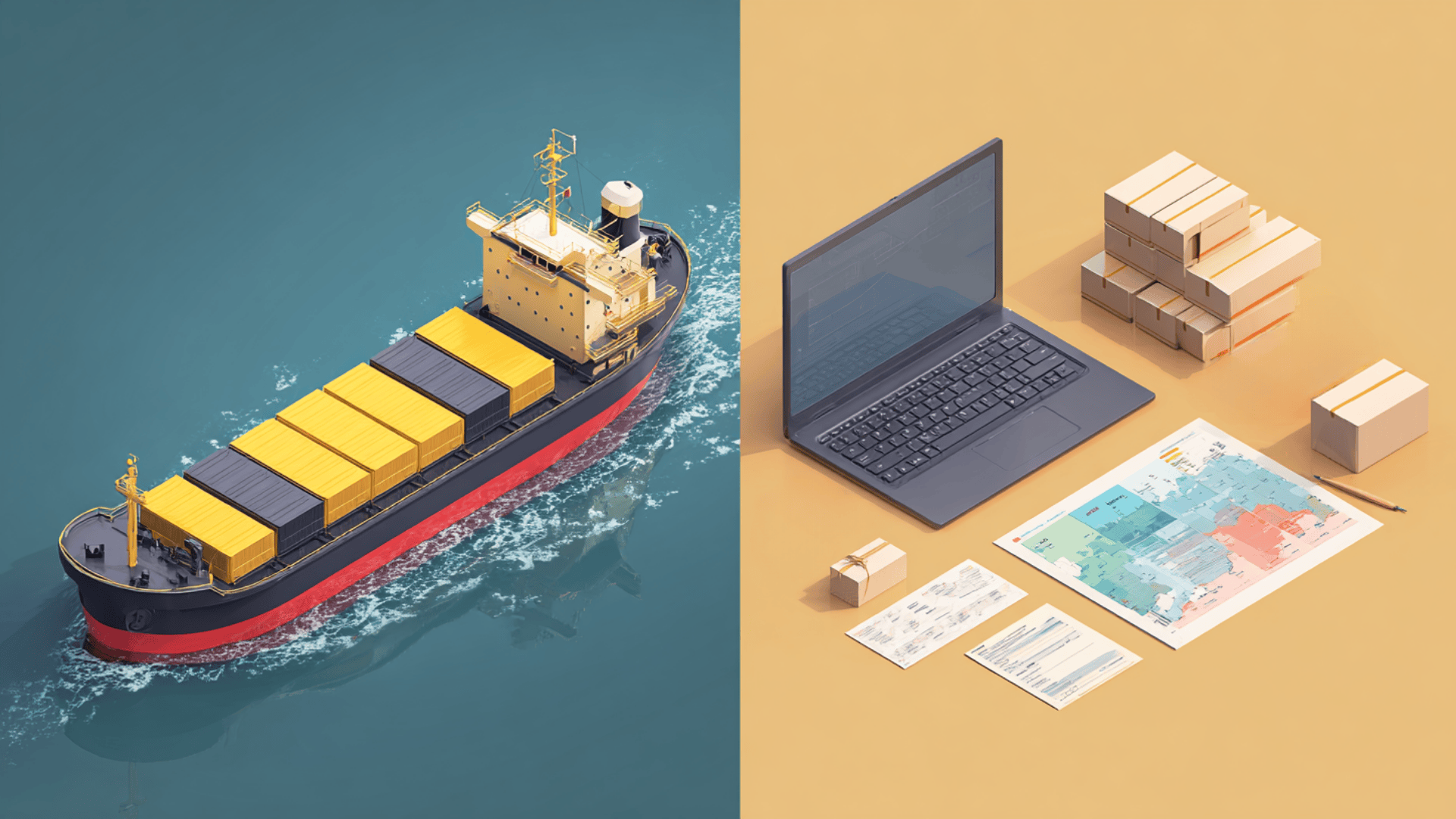The Hidden Weapon Behind eCommerce’s Fastest Deliveries in 2025
The world of eCommerce is growing faster than ever. Online stores now serve customers across countries, and shoppers expect fast shipping and accurate updates. To meet these demands, companies need more than just delivery partners. They need a logistics visibility service that can provide real-time tracking, accurate data, and full control of shipments.
In this guide, we will explore why visibility matters, what features to look for in 2025, and how eCommerce companies can use it to improve operations and customer satisfaction.

Why eCommerce Needs Visibility in 2025
Customer Expectations Are Higher
Today’s customers want to know where their orders are at all times. A late or lost package can damage trust quickly. A logistics visibility service helps eCommerce companies show accurate tracking updates, reduce uncertainty, and provide a better buying experience.
Growth of Cross-Border Trade
More businesses are selling worldwide. This makes shipping networks more complex. Delays at customs, carrier handovers, and local delivery challenges can cause frustration. Using global logistics visibility tools helps reduce these risks and improves transparency.
Competition Is Intense
With thousands of online stores competing, customer experience can be a key advantage. Offering real-time updates and clear delivery timelines sets one brand apart from others.
Key Features of a Strong Logistics Visibility Service
Real-Time Tracking Across Carriers
One of the most important features is real-time updates. A good system must connect to multiple carriers and update data instantly. This helps both the company and the customer know the exact location of a package.

End-to-End Visibility
From warehouse to last-mile delivery, businesses need a full view of their supply chain. A logistics visibility service should cover every step, not just international shipping.
Predictive Alerts and Notifications
Modern tools use AI and data analytics to predict delays. This allows businesses to act before a problem becomes serious. For example, a system can notify managers if customs clearance is slower than expected.
Integration with eCommerce Platforms
For online sellers, the service must connect easily with platforms like Shopify, WooCommerce, or Magento. Automatic order syncing saves time and reduces human error.
Easy-to-Use Dashboards
Data is powerful only when it is clear. A good system should have simple dashboards with tracking maps, status updates, and performance metrics.
Benefits for eCommerce Businesses
Better Customer Experience
When buyers can track their orders, they feel more secure. This reduces complaints and builds loyalty.
Reduced Delivery Delays
With predictive insights, businesses can adjust shipping plans quickly. For example, switching to a faster route or carrier.

Lower Operational Costs
By identifying where delays happen, companies can reduce waste and save money.
Stronger Global Reach
With global logistics visibility, companies can manage overseas shipments more easily. This opens new markets and creates growth opportunities.
Trends Shaping Logistics Visibility in 2025
Artificial Intelligence and Automation
AI is playing a bigger role in logistics. Predictive analytics helps companies plan better and avoid risks. Automation also improves warehouse efficiency and speeds up order processing.
Sustainability in Shipping
Customers care about eco-friendly practices. A logistics visibility service can track carbon emissions and help businesses choose greener routes or partners.
Integration with Multiple Carriers
Instead of relying on a single provider, eCommerce businesses now use several. Visibility services must connect to all major carriers, from postal operators to express couriers.
Data-Driven Decision Making
More companies are using data from logistics systems to make smarter business choices. Insights into delivery speed, carrier performance, and cost efficiency help managers improve service quality.

How to Choose the Best Logistics Visibility Service
Match It to Business Size
Small businesses may need simple dashboards and affordable options. Large enterprises need advanced tools and predictive insights.
Check Global Coverage
If you plan to sell internationally, make sure the service includes major shipping routes and customs data.
Focus on Scalability
Choose a platform that can grow with your company. As sales increase, you need a system that handles more orders without losing speed.
Consider Data Security
Customer data is sensitive. Make sure the service provider follows strong security standards.
Practical Use Cases for eCommerce
Fashion Retailers
Online fashion stores often face high return rates. A logistics visibility service helps track returns and ensures items are processed quickly. This builds trust with shoppers who want hassle-free exchanges.
Electronics Sellers
Electronics shipments are valuable and sensitive. Visibility services help track high-value packages and reduce theft or loss. Customers also receive peace of mind when buying expensive items.

Subscription Box Companies
For businesses that ship monthly boxes, delivery timing is critical. Predictive alerts help ensure products arrive on time, keeping subscribers happy.
Health and Beauty eCommerce
Customers in this sector expect fast, reliable delivery of personal items. Visibility services help ensure on-time shipments, preventing complaints and protecting brand reputation.
Case Study: postalparcel and eCommerce Visibility
Many businesses are already improving their operations with the right tools. On postalparcel, companies find reliable solutions that provide both local and international visibility. By using advanced dashboards and predictive alerts, sellers are able to give customers peace of mind and reduce operational risks.
One example is an online fashion store that used postalparcel‘s visibility solutions. They connected their eCommerce platform to the tracking system, giving buyers real-time updates. Complaints about late or lost packages dropped, and customer satisfaction scores increased.
Another case involved a subscription-based food company. By adopting visibility tools, they could see delays at customs before they affected shipments. Adjustments to routes helped them maintain customer trust and reduce waste.
Steps to Get Started
- Analyze Current Gaps – Review where delays happen in your supply chain.
- Research Providers – Compare platforms that specialize in eCommerce logistics.
- Test Integrations – Run a trial with your current eCommerce system.
- Train Teams – Make sure staff know how to use dashboards and reports.
- Review Results – Track improvements in delivery times and customer satisfaction.

Future Outlook for eCommerce Logistics
The next few years will bring even more changes. Advances in AI, blockchain, and IoT will improve transparency further. Shoppers may soon see exact temperature tracking for fresh goods or blockchain-certified updates for secure shipments.
For eCommerce businesses, adopting a logistics visibility service now means staying ahead of these trends. As expectations grow, companies that embrace transparency will enjoy stronger customer loyalty and sustainable growth.
Conclusion
The future of eCommerce depends on trust, speed, and reliability. A strong logistics visibility service helps online businesses meet customer expectations, reduce delays, and manage costs. With the rise of AI, automation, and global logistics visibility, 2025 will give companies more power to compete and grow.
For businesses ready to take the next step, tools like those offered by PostalParcel make visibility easy to manage. By combining real-time tracking, predictive alerts, and global coverage, companies can deliver not only products but also confidence to every customer.
Industry Insights
news via inbox
Nulla turp dis cursus. Integer liberos euismod pretium faucibua








